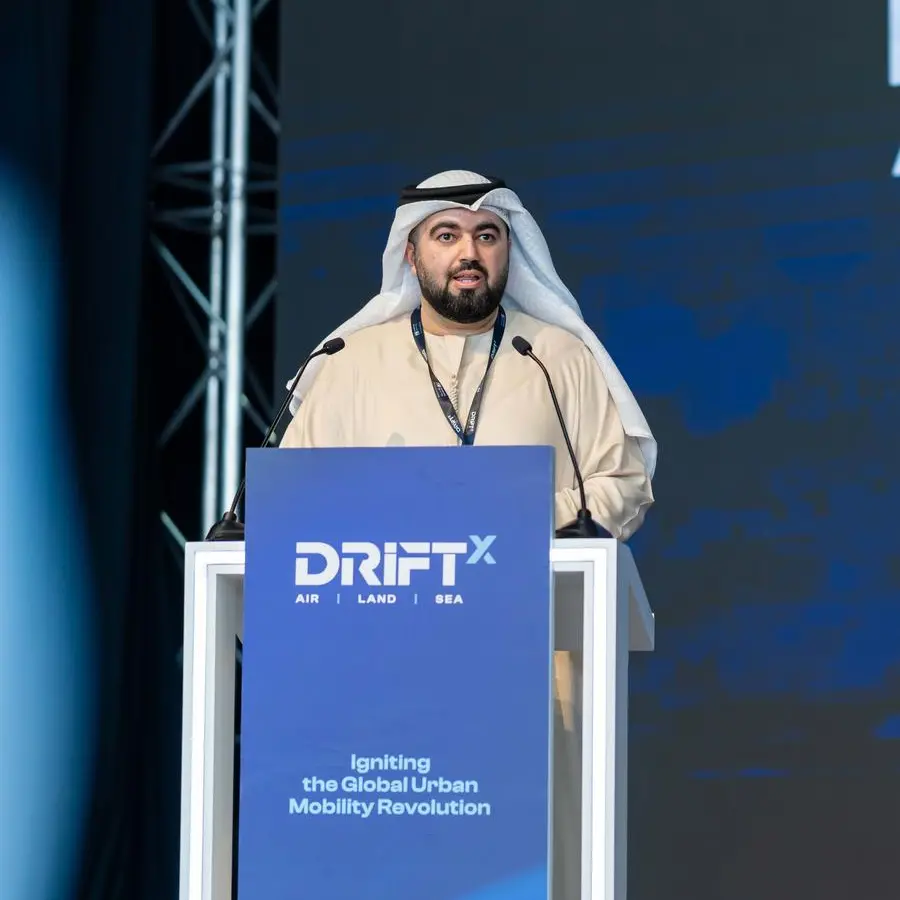- Fixed Income factors are ready for prime time, 34% of respondents have increased Fixed Income allocations
- Notable rebalancing of equity strategies: Momentum (+16%) Quality (+15%) Low Volatility (+6%), Value (-9%)
- Investors embrace dynamic implementation
- Half of factor index investors now requesting custom indices
Dubai, UAE: Investors employing factor strategies are continuing to increase their factor allocations, the fourth Invesco Global Factor Investing Study has found. The study, the largest of its kind, conducted face-to-face interviews with 241 global institutional and wholesale factor investors responsible for managing over $25 trillion in assets.
This year’s study provides deeper insight into the paths of adoption, experiences, methods of implementation, future intentions and challenges to be overcome in factor investing. Nearly half (45%) of the investors surveyed in APAC, EMEA and North America increased factor allocations in 2019. Average allocations to factor investing strategies have increased from 2018 to 2019 for both institutional (16% to 18%) and wholesale (11% to 14%) investors globally. In EMEA, 59% of the respondents plan to increase their allocations over the next three years. (Figure 1) Also nearly 70% of respondents have also reported that their factor investing performance met or exceeded expectations in 2019. (Figure 2)
With factor investing, investors look to improve risk and return expectations for their portfolios by targeting specific performance characteristics of a security. The study found that respondents have continued to increase both the number of factors they target and their usage of multi-factor strategies. They have also taken more active decisions about which factors to include or exclude. One of the results is a reduction in exposure to the value factor (one of the first and most widely adopted factors) and a concurrent increase in the use of other factors such as momentum, quality and low volatility. Despite some questioning whether the value factor remains as effective, it continues to be the factor with the widest level of support among both global wholesale (91%) and institutional investors (86%). (Figure 3)
Georg Elsaesser, Senior Portfolio Manager, Quantitative Strategies at Invesco said: “The movement of factor investing toward the mainstream continues at pace. Early adopters want to do more with their factor allocations, including active and customized approaches and expanding to fixed income. Existing factor investors have been increasing allocations with over half of the respondents in the study intending to increase allocations over the next three years, this pattern of adoption is likely to continue.”
Zainab Kufaishi, Invesco’s head of institutional business for the Middle East and Africa said: “We have seen a steady increase in the number of investors in the Middle East turning to factor investing to better manage their portfolios. Reducing risk, enhancing return and reducing costs continue to be the three most important factors driving adoption in the region. Most investors who have deployed factor strategies have taken a long-term view, though believe that capturing the benefits of factor investing is in part dependent on a dynamic approach to implementation.”
This year’s study found that a 3-to-1 majority of factor investors now choose an active implementation approach as opposed to a passive one – with active strategies executed through segregated mandates, co-mingled mutual funds and exchange traded products (ETPs). (Figure 4)
For active implementation, the study found, there is a preference for segregated mandates among larger institutional and wholesale investors, while mid-sized and small investors are more likely to opt for co-mingled mutual funds. Notably the use of ETPs is not limited to one type of investor or to just the implementation of passive strategies. These products play an important part in the implementation of active strategies for nearly 43% of large institutional investors (AUM>$50BN), usually in combination with other types of vehicles.
And where investors still implement strategies passively via a factor index, almost half of respondents (42% institutional and 44% wholesale) prefer a custom approach to standard index design (Figure 5). These custom approaches may offer better management of factors and more control over factor definitions and metrics.
Investors view success in factor investing as being contingent on constant evolution through the introduction of new factors, definitions, data sources, technologies and asset classes (Figures. 6, 7).
Fixed Income Factors continue to attract investors attention
The past 12 months have seen a notable increase in the proportion of respondents who believe factor investing can be extended to fixed income. Globally, some 70% of institutional investors and 78% of wholesalers now view the approach as being applicable, up from 62% and 57% respectively in 2018 (Figure 8).
With yields now at record lows and around a quarter of bonds globally trading with negative yields, attention has turned to alternative ways of adding value from the asset class. Respondents saw factor investing as a solution that could target sources of returns transparently and cost effectively even in the current environment.
64% of investors identify yield / carry as the top factor that can be identified in fixed income, partly explaining the increase to such strategies over the past 12 months, followed by liquidity, value and quality (54%, 46% and 42% respectively) (Figure 9).
Despite demand for the application of factor strategies within fixed income, a shortage of appropriate products is still evident, with nearly nine in ten respondents describing this asset class as not well covered by current factor offerings (this reflects perceptions of coverage in terms of quality, not just quantity). As such, some 42% of institutional investors added to equity factors in 2019, while 35% added to fixed income factors. For wholesalers, the figures were 46% and 32% respectively (Figure 10).
Zainab Kufaishi added: “This year’s results suggest that as regional investors become more experienced in factor investing, the demand for fixed income factor strategies is rising. Yet challenges remain as investors believe their product needs in fixed income are not yet adequately addressed.”
ESG considerations impact factor investing strategies
Looking ahead at market developments, this year’s study found large numbers of global and regional investors incorporating Environmental, Social, and Governance (“ESG”) considerations alongside factors – some 85% of respondents are doing so in parallel (Figure 11) and nearly half believe that ESG adoption complements factor investing adoption. (Figure 12)
However, it is an area where many asset owners are uncertain about the interaction of ESG and factor initiatives. Over a quarter (28%) of institutional investors see ESG as a factor in its own right, while 40% see ESG as a combination of factors. To understand these issues better, asset owners need assistance from external partners, given the complexity of analysis and a lack of readily available data and tools.
Zainab Kufaishi concluded: “Overall, our latest Global Factor Investing Study shows rising commitment to factor strategies among large institutional investors in the region. The fact that factor allocations are continuing to spread across portfolios suggests it is gaining a strategic footing in investing, not just as a low-cost substitute for traditional active management, but as a more transparent and efficient tool for building a holistic portfolio.”
-Ends-
Press contact:
Sasha Pinto, Weber Shandwick
E: SLPinto@webershandwick.com
M: +971 56 693 8718
Zeeshan Masud, Weber Shandwick
E: Zmasud@webershandwick.com
M: +971 55 918 6751
Appendix – Sample and methodology
The fieldwork for this study was conducted by NMG’s strategy consulting practice. Invesco chose to engage a specialist independent firm to ensure high quality objective results. Key components of the methodology include:
- A focus on the key decision makers conducting interviews using experienced consultants and offering market insights.
- In-depth (typically 1 hour) face-to-face interviews using a structured questionnaire to ensure quantitative as well as qualitative analytics were collected.
- Results interpreted by NMG’s strategy team with relevant consulting experience in the global asset management sector.
In 2019, the fourth year of the study, we conducted interviews with 241 different pension funds, insurers, sovereign investors, asset consultants, wealth managers and private banks globally. Together these investors are responsible for managing $25.1 trillion in assets (as of 31 March 2019).
In this year’s study, all respondents were ‘factor users’, defined as any respondent investing in a factor product across their entire portfolio and/or using factors to monitor exposures. We deliberately targeted a mix of investor profiles across multiple markets, with a preference for larger and more experienced factor users. The breakdown of the 2019 interview sample by investor segment and geographic region is displayed in figures 6.1, 6.2 and 6.3 in the report. Invesco is not affiliated with NMG Consulting.
Figure 1: Investors looking to increase factor allocations over next three years (% Citations, by region, 2019)
Sample size: North America = 65, EMEA = 73, APAC = 66.
Figure 2: Performance of factor allocations relative to expectations in past 12 months (% Citations)
Sample size: Institutional = 124, Wholesale = 100.
Figure 3: Belief in rationale for various factors (% Citations)
Sample size: Institutional = 121, Wholesale = 90.
Figure 4: Method of executing factor strategies (active implementation) (% Citations, by segment and assets under management)
Sample size: Large (AUM>$50bn), Institutional = 37, Wholesale = 18, Medium (AUM $10bn-50bn), Institutional = 25, Wholesale = 15, Small (AUM<$10bn), Institutional = 60, Wholesale = 48.
Figure 5: Passive implementation, preferred factor index (% Citations)
Sample size: Institutional = 108, Wholesale = 97.
Figure 6: Investors believing factor approach evolution important (% Citations)
Sample size: Institutional = 129, Wholesale = 108.
Figure 7: Envisaged approaches to evolution (% Citations)
Sample size: Institutional = 110, Wholesale = 88.
Figure 8: Percentage of respondents that believe factor investing can be extended to fixed income (% Citations)
Sample size: 2018 = 284, 2019 = 231.
Figure 9: Factors that could be identified in fixed income (% Citations)
Sample size: 156.
Figure 10: Change in factor allocations by asset class over past 12 months (% Citations)
Sample size: Institutional = 124, Wholesale = 107.
Figure 11: % of respondents incorporating ESG by channel (% Citations)
Sample size: Institutional = 132, Wholesale = 109.
Figure 12: Opinions on whether ESG complements or detracts from performance of factor strategies (% Citations)
Sample size: Institutional = 116, Wholesale = 96.
About Invesco
Invesco is an independent investment management firm dedicated to delivering an investment experience that helps people get more out of life. NYSE: IVZ; www.invesco.com.
This document is issued in
Dubai by Invesco Asset Management Limited, PO Box 506599, DIFC Precinct Building No.4, Level 3, Office 305, Dubai, United Arab Emirates. Regulated by the Dubai Financial Services Authority.
© Press Release 2019Disclaimer: The contents of this press release was provided from an external third party provider. This website is not responsible for, and does not control, such external content. This content is provided on an “as is” and “as available” basis and has not been edited in any way. Neither this website nor our affiliates guarantee the accuracy of or endorse the views or opinions expressed in this press release.
The press release is provided for informational purposes only. The content does not provide tax, legal or investment advice or opinion regarding the suitability, value or profitability of any particular security, portfolio or investment strategy. Neither this website nor our affiliates shall be liable for any errors or inaccuracies in the content, or for any actions taken by you in reliance thereon. You expressly agree that your use of the information within this article is at your sole risk.
To the fullest extent permitted by applicable law, this website, its parent company, its subsidiaries, its affiliates and the respective shareholders, directors, officers, employees, agents, advertisers, content providers and licensors will not be liable (jointly or severally) to you for any direct, indirect, consequential, special, incidental, punitive or exemplary damages, including without limitation, lost profits, lost savings and lost revenues, whether in negligence, tort, contract or any other theory of liability, even if the parties have been advised of the possibility or could have foreseen any such damages.










